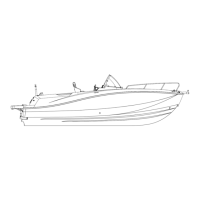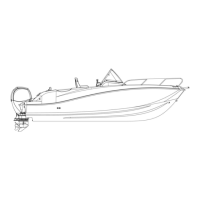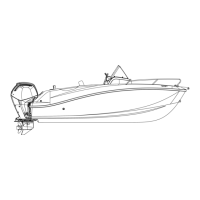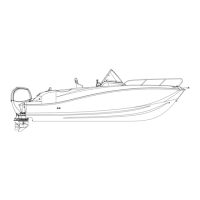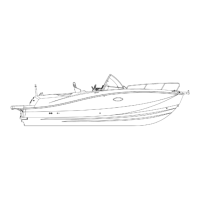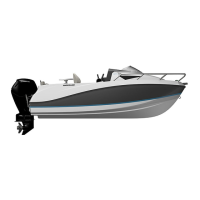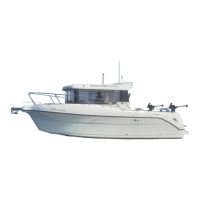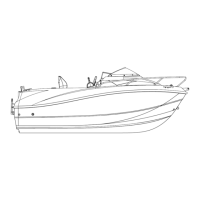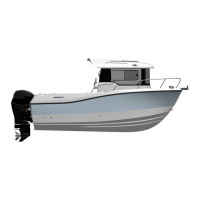16
Quicksilver 505OP — System & Component Overview and Operaon
Never obstruct passageways to exits or hatches, obstruct
safety controls (fuel valves, LPG valves, electrical switches,
etc.) obstruct portable re exnguishers stowed in lockers,
or modify any of the cra’s system (especially fuel, LPG, or
electrical) or allow unqualied personnel to modify any of
the cra’s system.
Fire Exnguisher
Fire Exnguisher
The re exnguisher is located in the helm seat storage compartment.
4. Carbon Monoxide Monitor
Quicksilver® boats are equipped with carbon monoxide (CO) monitors in the cabin and enclosed
berths or staterooms. Carbon Monoxide is an odorless, colorless, and tasteless, extremely toxic gas
produced by engines, heaters, stoves or generators. When inhaled it combines with hemoglobin in the
blood, prevenng absorpon of oxygen and is unlikely to be noced unl the person is overcome.
Prolonged exposure to low concentraon or very short exposure to high concentraons can result in
asphyxiaon and death.
Symptoms of Carbon Monoxide poisoning include dizziness, headaches, ringing in the ears, nausea, or
unconsciousness. GET MEDICAL ATTENTION AS SOON AS POSSIBLE. These symptoms are oen
confused with seasickness or intoxicaon, so those aected may not receive the medical aenon
they need. The poisoning vicm’s skin oen turns cherry red. If CO poisoning is suspected, have the
vicm breath fresh air deeply. If breathing stops, resuscitate. A vicm oen revives, then relapses
because organs are damaged by lack of oxygen.
Carbon Monoxide Accumulaon & Prevenon
Carbon Monoxide can accumulate in dangerous concentraons anywhere in or around your boat
including on back decks, swim plaorms, or in water around generator exhausts. CO can remain in
or around your boat at dangerous levels even if your engine is no longer running. To minimize the risk
of Carbon Monoxide poisoning, consider the following:
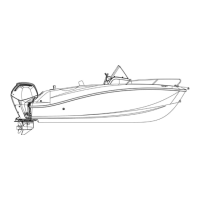
